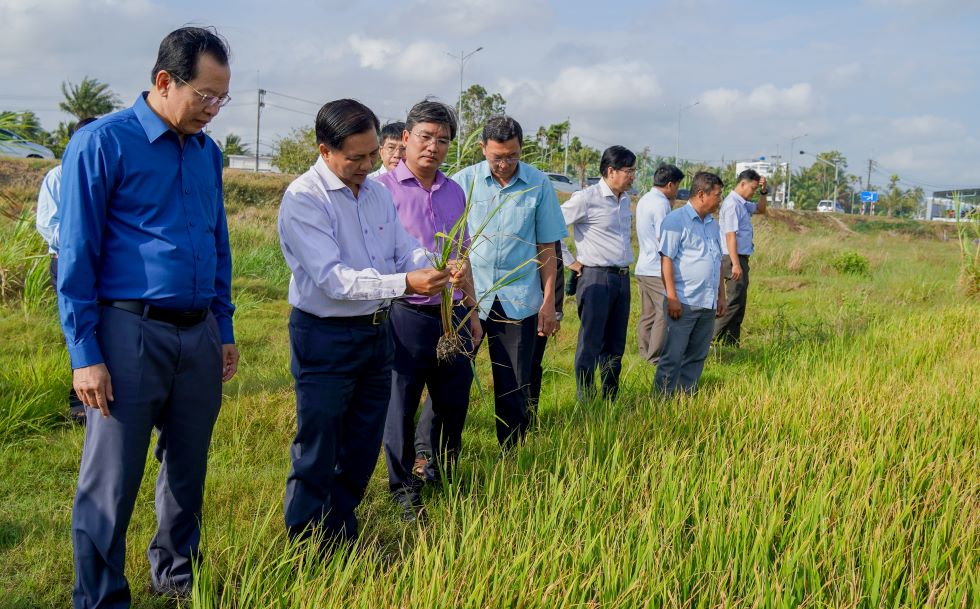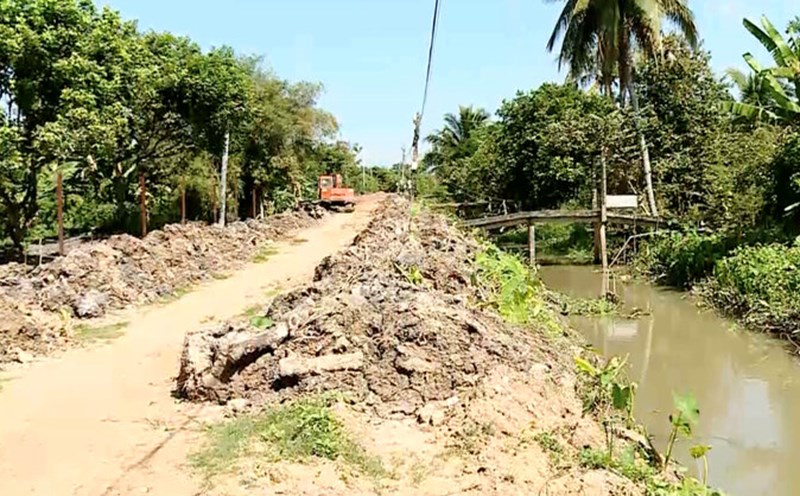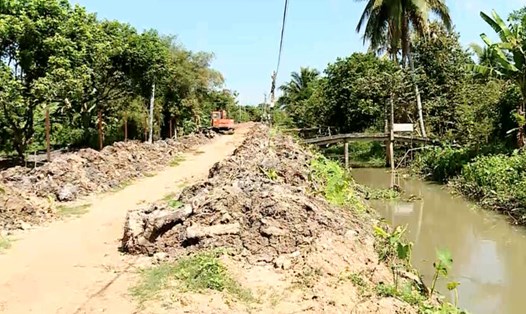On March 17, Chairman of Soc Trang Provincial People's Committee Tran Van Lau directly inspected the situation of drought, salinity intrusion and production of people in Long Phu and Ke Sach districts.
According to the report, although facing a complicated situation of saline intrusion and coming earlier than the same period, thanks to proactive implementation of effective prevention and control solutions, the locality has not recorded any damage to crop areas caused by drought and salinity intrusion.

According to the Department of Agriculture and Environment of Soc Trang province, salinity intrusion with high tides (>4 g/l) has occurred. However, thanks to good forecasting information and timely operation of salinity prevention culverts, the situation has been well controlled. Currently, late winter-spring rice (crop 3) is in the stage of branching to the budding stage, expected to be harvested in May. The amount of fresh water on canals is still enough to ensure the third crop rice production area.
Recorded in Long Phu district, local authorities and the agricultural sector have actively promoted and advised farmers not to produce rice crop 3. As a result, the rice area is only 1,780 hectares, down more than 4,250 hectares over the same period. Currently, the rice is in the stage of branching, blooming and ripening, with an estimated yield of 6.1 tons/ha.
Ke Sach district - the largest fruit growing area in Soc Trang province - has not yet recorded any damage due to lack of water and saline intrusion. The district's agricultural sector has coordinated with communes and towns to inspect the irrigation system, embankments, culverts, dams, and dredging garden ditches, ensuring salinity prevention, sweet storage, serving life and agricultural production. Information on salinity intrusion is promptly reported to the people for proactive response.

At the inspection, the Chairman of the People's Committee of Soc Trang province praised the sense of responsibility in preventing and combating saline intrusion of localities, especially the results of protecting the late winter - spring rice crop. Mr. Lau suggested that the agricultural sector continue to effectively implement construction and non-construction solutions such as dredging canals and freshwater ponds; maintaining water monitoring and timely information to people to proactively collect freshwater for storage and pump water for crops.











